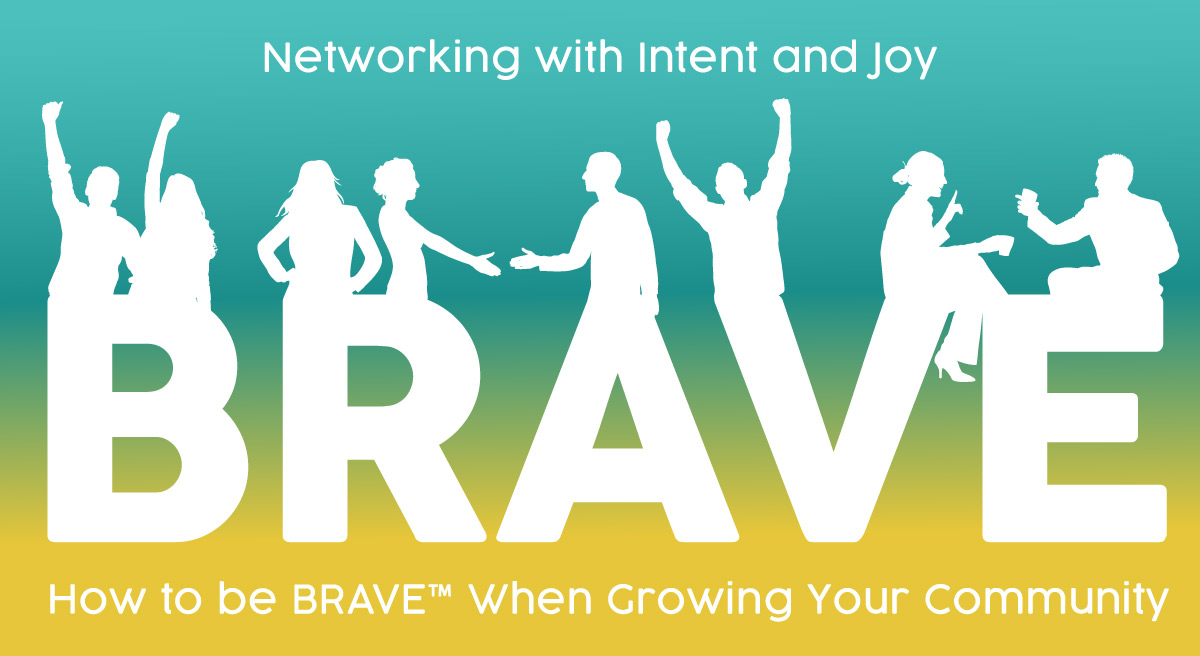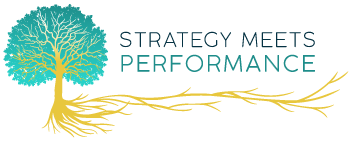
[A Five-Part Series on Building Relationships to Build Business and Community]
In Part 1 of the BRAVE series, BOLDLY and STRATEGICALLY CONNECT, readers discovered that your ideal clients and colleagues are waiting for you to connect, there are many places you can serve your community so you can expand your reach, and last, you can build your own community.
Part 2 of the BRAVE series, REACH OUT REGULARLY is about creating a plan to keep in touch with all of the amazing people you will meet. Part 3 of the BRAVE series is about creating an Abundance mindset where you operate from a mindset that there is enough to go around for everyone, versus a scarcity mindset, which is about viewing the world as a place of absence of resources, clients, and general goodwill. Generosity, the key to Abundance, brings joy, ease, and success.
Part 3 of 5

Having an abundance mindset centers on believing that there is enough to go around for everyone. Enough clients, enough resources, enough ________. It is also about thinking of what you do want versus what you don’t want. It is about helping others and not expecting anything in return. It is about assuming positive intent about others’ unexpected or undesirable behaviors rather than immediately jumping to conclusions and judgments. It sounds so easy and lovely, doesn’t it? It is obviously not so simple if you have been burned or hurt by others. It may also require you to rewire your brain toward the positive. Psychologist Rick Hanson has found that our brain is actually wired more toward the negative and that it takes extra work and emotional/mental/psychic energy to rewire it toward the positive.

Stephen Covey’s Abundance Mentality flows from a deep inner sense of personal worth and feeling secure about yourself. When you have this life view, you will come from a place of openness, curiosity and creativity. You will share resources and introductions freely – believing that you will connect to those you are meant to connect with.
Another way to look at it is by comparing it to its opposite: the Scarcity Mindset. When you have this, you believe that there are not enough resources, clients or _____. Covey said this mindset would make you compete for available resources, even when there is an abundance of them. You will also feel suspicious of others’ intentions, and anxious and envious of others’ successes. It doesn’t seem very joyful, does it? It may be hard to admit if you have these feelings on occasion.
If you find yourself feeling the greens of envy, it’s important to catch yourself and rewire your brain to go from self-doubt, lack of confidence and despair (which are roots of envy) to joy, admiration and giving positive vibes to the person. Imagine if you see someone who has what you want (their own business, a great family, fantastic physique, etc.). If you were to send positive vibes and “good for you’s” instead of comparing yourself and telling yourself you’re not good enough, you will feel better. You will be sending appreciation and admiration toward the person instead of envy and bad vibes. Reframe, “I’ll never have that,” to “I will work on having that in my life – what an inspiration!” Viewing the world as abundant means you are being positive. You are seeing other’s hard work. The more you give, the more you will receive.
Several years ago, I interviewed nine of San Diego’s most admired CEOs[1]. One of the questions I asked them was about their views on the competition. The responses ranged from “know what they are doing but don’t get fixated” to “I keep in touch with them on occasion and we share information. You can learn a lot from one another.”
We can think of those in our space, who are serving our clients in a negative way.
Here are some examples of how you can reframe messages you send to yourself so you can rewire your brain toward the positive:
Scarcity: There are not enough clients to go around.
Abundance: There are plenty of clients and I need to get clear on how to attract them
Scarcity: All potential clients are liars just out to compare prices.
Abundance: People want to buy. I need to learn what each prospect needs and if I’m the perfect person to deliver it.
Scarcity: The competition can run you out of business.
Abundance: I will listen to clients and my board of advisors so I can keep innovating and offering great products and services to my clients.
Living with abundance is a mindset and a lifestyle. I practice it with the little things like chatting with the grocery store clerk and the coffee clerk, and smiling at those I pass by. In the bigger ways, I’ve shared key intelligence and resources with anyone who needs it, including those who work in my space (notice I didn’t say competitors in this context). When it comes to people in your space, you can often collaborate with one another on projects. You can also become friends because you have something so big in common. Why do this? Why not? I believe each person is doing his/her best to serve customers, make a difference and support their family. I want to see people succeed.
Here are some potential ideas you may want to embrace.
- Show gratitude for those in your life. Not just for big things, but also the little things.
- When faced with a problem, take a deep breath and don’t react. Breathe and remind yourself that you will be able to handle whatever the world throws at you.
- Make a list of your amazing qualities and refer to them during tough times.
- Remind yourself to reframe to the positive when you see a negativity spiral beginning. Share the concept of an abundance mindset with your loved ones and valued colleagues and ask if you can remind each other when either of you is becoming negative.
- Surround yourself with people who share your values.
Your Next Steps
- Make a list of all the ways you live with an abundance mindset.
- Make a list of 20 qualities you appreciate about yourself.
- Use this affirmation: “I show appreciation to others by…”
- Identify and be aware of situations that move you toward a scarcity mindset (list the ways and the situations).
- Think about someone you admire, the things you admire about him/her and send appreciation for these things.
- Use this affirmation: “I can reframe situations that are challenging for me.” Give at least two examples.
- Complete this statement: “If I lived more in abundance, I would start…”
- Determine ways you can practice living in abundance in your daily life, and then do them!
[1] As identified by the San Diego Business Journal: https://strategymeetsperformance.com/category/most-admired-ceos/ – https://strategymeetsperformance.com/wp-content/uploads/2020/03/Dr.-Sherry-Nooravi-Most-Admired-CEOs-Research.pdf



